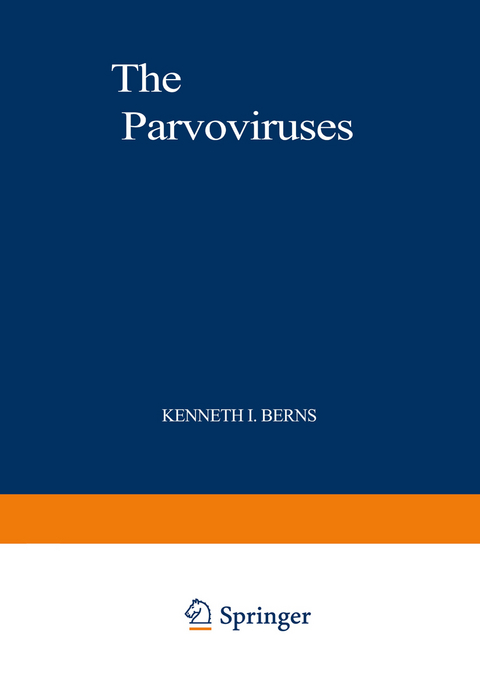
The Parvoviruses
Springer-Verlag New York Inc.
978-1-4684-8014-6 (ISBN)
Finally, AA V establishes latent infections in vivo and is the only mammalian DNA virus where a comparable model system has been established in cell culture. This system has allowed study of the mechanism of latent infection at the molecular level.
1 Adeno-Associated Virus DNA Structure and Replication.- I. AAV DNA Structure.- II. Replication of AAV.- III. A Model for AAV DNA Replication.- IV. Host and Viral Proteins Required for AAV DNA Replication.- V. Conclusion.- References.- 2 Biology of Adeno-Associated Virus.- I. Introduction.- II. Association with Adenovirus.- III. Host Range.- IV. Experimental Infection in Utero.- V. Latent Infection.- VI. Inhibition of Adenovirus Oncogenicity.- VII. Interactions with Herpesviruses.- References.- 3 Adeno-Associated Virus Defectiveness and the Nature of the Adenovirus Helper Function.- I. Introduction.- II. Biological Background.- III. Definition of the Helper Function.- IV. Genome Structure and Growth Cycle of AAV.- V. Genome Structure and Growth Cycle of Adenovirus.- VI. Role of Specific Adenovirus Genes in AAV Helper Function.- VII. Growth of AAV in Transformed Cells and Inhibition of Adenovirus Functions.- VIII. Summary.- References.- 4 Autonomous Parvovirus DNA Structure and Replication.- I. DNA Structure.- II. DNA Replication.- III. Model for DNA Replication.- References.- 5 Parvovirus Transcription.- I. Introduction.- II. Methods for Study of Transcription.- III. RNA Synthesis and the Virus Growth Cycle.- IV. DNA Genome Orientation and RNA Strand Specificity.- V. In Vivo Transcription. RNA Structure and Genome Location.- VI. In Vitro Synthesis of Parvovirus RNA.- VII. Promoter Structures.- VIII. Post-transcriptional Modification.- IX. Control of RNA Abundance.- X. Coding Potential of Parvovirus mRNA.- XI. Summary.- References.- 6 Variant and Defective Interfering Parvoviruses.- I. Introduction.- II. Nomenclature.- III. Detection of Variant Parvoviruses.- IV. Physical Properties of Variant Particles.- V. Physical Structure of Variant DNA.- VI. In Vitro Construction of Variant Genomes.- VII. In Vivo Generation and Replication of Variants.- VIII. Interfering Properties of Variants.- IX. Mechanism of Interference.- X. Biological Inferences.- References.- 7 Parvovirus Proteins.- I. Introduction.- II. Adenovirus-Associated Virus.- III. Aleutian Disease Virus.- IV. Bovine Parvovirus.- V. Canine Parvovirus.- VI. Densonucleosis Virus.- VII. Feline Panleukopenia Virus.- VIII. H-1 Parvovirus.- IX. LuIII Virus.- X. Minute Virus of Mice.- XI. Porcine Parvovirus.- XII. Rabbit Parvovirus.- XIII. Rat Virus.- XIV. Discussion.- References.- 8 Biology of Pathogenicity of Autonomous Parvoviruses.- I. Introduction.- II. Antigenic Structure and Serologic Relationship.- III. Propagation and Assay Systems.- IV. Pathogenesis.- References.- 9 Canine Parvovirus: Origin and Significance of a “New” Pathogen.- I. Introduction.- II. The Virus.- III. The Disease.- IV. The Origin of CPV.- V. Conclusions.- References.- Addendum The Human Parvovirus.- I. A Ubiquitous Virus Associated with Erythema Infectiosum?.- References.
| Erscheint lt. Verlag | 29.4.2012 |
|---|---|
| Reihe/Serie | The Viruses |
| Zusatzinfo | 21 Illustrations, black and white; XIV, 424 p. 21 illus. |
| Verlagsort | New York, NY |
| Sprache | englisch |
| Maße | 170 x 244 mm |
| Themenwelt | Medizin / Pharmazie ► Medizinische Fachgebiete ► Mikrobiologie / Infektologie / Reisemedizin |
| Studium ► Querschnittsbereiche ► Infektiologie / Immunologie | |
| Naturwissenschaften ► Biologie ► Botanik | |
| Naturwissenschaften ► Biologie ► Ökologie / Naturschutz | |
| Naturwissenschaften ► Biologie ► Zoologie | |
| ISBN-10 | 1-4684-8014-6 / 1468480146 |
| ISBN-13 | 978-1-4684-8014-6 / 9781468480146 |
| Zustand | Neuware |
| Haben Sie eine Frage zum Produkt? |
aus dem Bereich


